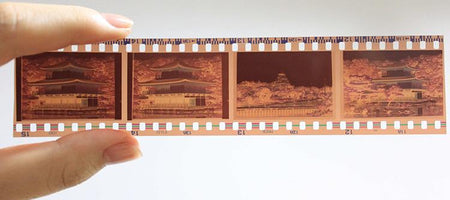There’s a difference between classic movies and old film. For instance, the first one we hold near and dear in our memories and in our hearts, while the latter tends to fade from existence, literally.
Film isn’t eternal. And as some of the most classic films begin to hit that century birthday, it’s important to understand not only that film ages, but when it begins to age, how it deteriorates and what you can do to help prevent aging – especially when it comes to your own personal video tapes and reels – is vital to saving those treasured memories.
Here lies VHS, 15 years young
Did you know that after only 15 years, the film inside your home movie collection begins to fade? Heck, it’s probably been 15 years since you even watched them.
Now, just because 15 years is average onset of VHS deterioration, that doesn’t mean your VHS copies won’t work. It just happens to be the age where video and audio quality begin to drop. You’ll start to notice faded picture quality and more muted coloring, not to mention muffled or distorted sound. If you were to pop in a 15+ year VHS today, you’d probably have to adjust the tracking more than you ever did all those years ago.
Why does film age?
Due to years of moisture and/or temperature fluxes, the acetate base layer that film was commonly printed on begins to degrade. As a result, color decay sets in often giving your film an overly red or blue hue. As that acetate base continues to decompose, free acetic acid is released within the film base, literally giving your tape a vinegary smell. It’s a process that is aptly called vinegar syndrome.
Vinegar syndrome is especially devastating to old home movies because not only does it affect film quality, but in later stages, it can warp the film and make it incredibly brittle.
Storage and preservation
If you were told to run and go check on your old film and VHS home movie collection, where’s the first place you’d run – the basement? The attic?
Wrong and wrong. Those may be convenient storage areas because they’re out of sight, out of mind, but those are the two worst areas in your house for storing old media. Why? Because attics suffer too many swings in extreme temperature, and basements are often to humid/damp, which can cause mold and accelerate early deterioration.
Also, air-tight containers may seem like a good plan, but conversely, they’ll actually expedite vinegar syndrome, so let them breathe a little.
The best place to store your old analog media, films, videos and more is in a temperature and humidity controlled area of your house or storage container that’s breathable.
Don’t hoard ‘em. Digitize ‘em.
Now that you know when and how film deteriorates, it’s time to think of a failsafe plan so that your memories never go the wayside. That’s right, simply regulating how you store your media isn’t enough. That’s why digitization can give you peace of mind and convenience while preserving your family’s most memorable moments.
So what do you say? Let the worry of your movies fade away along with the film itself by preserving your past with digitization. Better yet, we can help! Check us out.













